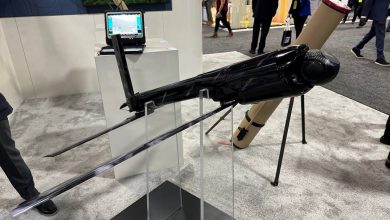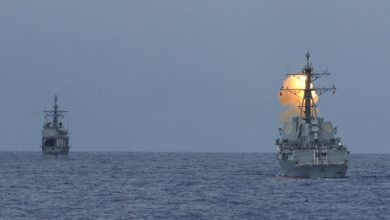No 30-year-old drone wingmen: US Air Force eyes regular CCA overhauls

The Air Force’s aircraft fleet is replete with fighters, bombers, tankers and other aircraft that are still flying after decades or even generations.
But the service’s planned collaborative combat aircraft — drones that will fly alongside crewed fighters — probably won’t last even a single generation before they need to be replaced or heavily overhauled, Chief of Staff Gen. David Allvin said Thursday.
Allvin, speaking at the Air and Space Forces Association in Arlington, Virginia, said planning from the start to regularly replace CCAs is the best way to keep their missions simple and costs down, so the service can field them in significant numbers.
“I don’t want a set of collaborative combat aircraft that’s going to last for 25 to 30 years,” Allvin said. “If it’s going to last 25 or 30 years, then it’s gotta do everything but make you toast in the morning.”
Making CCAs into complex, multi-mission aircraft will inevitably drive up the cost, Allvin said, meaning the Air Force could only buy a limited number of them. ‘
Air Force officials have regularly talked about the need for CCAs to augment its crewed fighters and provide what they call “affordable mass.” A smaller fleet of more expensive drone wingmen, as Allvin is trying to avoid, would make achieving that affordable mass goal harder to reach.
Allvin instead envisions technology advancing quickly enough that after a decade, a class of CCAs might be outdated and ready to be replaced – or heavily updated with new technologies.
“That CCA won’t be as relevant — but it might be adaptable, and that’s why we’re building in the modularity,” Allvin said.
Air Force Secretary Frank Kendall has told the service to plan for a CCA fleet of about 1,000 drones to fly alongside the F-35A Joint Strike Fighter and the service’s planned Next Generation Air Dominance fighter. The missions CCAs would carry out will likely vary and include strike operations, gathering intelligence and reconnaissance, conducting electronic warfare, and serving as decoys.
Kendall also made affordability a requirement for the CCA program, and has said each drone must cost a fraction of an F-35′s price tag.
In April, the Air Force announced it had selected Anduril and General Atomics to further develop designs for their CCA concepts, and then build production-representative test aircraft.
At Thursday’s event, Allvin noted the financial stresses the Air Force is facing, including inflation and limited budgets.
“All of those pressures are coming to bear against us, and we do have to ask the fundamental question: What does an effective Air Force look like in the future and how much of that is dependent on external resources?” Allvin said.
But when asked if the service will be able to produce NGAD as it has planned, Allvin did not explicitly commit to the sixth-generation fighter.
“We’re going to have to make those choices, make those decisions across the landscape,” Allvin said. “That’s going to probably play out in the next couple of years.”
Stephen Losey is the air warfare reporter for Defense News. He previously covered leadership and personnel issues at Air Force Times, and the Pentagon, special operations and air warfare at Military.com. He has traveled to the Middle East to cover U.S. Air Force operations.
Read the full article here





